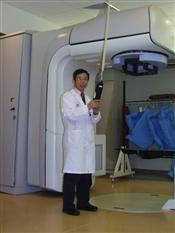Extracting Organ-Specific Radiobiological Parameters From Compiled Clinical Data for Reirradiation Planning of Head and Neck Cancer
E Quashie, A Tai*, P Prior, M Awan, C Schultz, X Li, Medical College of Wisconsin, Milwaukee, WI
Presentations
MO-E115-IePD-F7-6 (Monday, 7/11/2022) 1:15 PM - 1:45 PM [Eastern Time (GMT-4)]
Exhibit Hall | Forum 7
Purpose: Reirradiation of head and neck cancers (HNC) is not uncommon. Biological effects from different fractionations and/or the repair between the initial- and re-irradiations need to be considered to determine tolerable doses for organs at risk (OAR) during reirradiation planning. The purpose of this work is to extract organ-specific model parameters for reirradiation planning of HNC.
Methods: The clinical dose constraint data for 5 OARs (spinal-cord, esophagus, brainstem, brachial-plexus and optical-pathway) from literatures and expert consensus reports, such as TG101, QUANTEC, HyTEC, were analyzed. Data included the OAR dose constraints reported for conventional fractionated (CFRT), hypofractionated and stereotactic body radiotherapy (SBRT), corresponding to <10% of grade 3 or higher toxicity as categorized mostly by CTCAE v3 or v4, RTOG and EORTC. Linear-quadratic (LQ) and linear-quadratic-linear (LQL) models were used to calculate biologically equivalent dose (BED) and were used to perform iso-BED fitting to the data and to extract model parameters such as the alpha/beta ratio. The dose constraints in term of equivalent physical dose in 2Gy fraction (EQD2) were calculated using the obtained parameters.
Results: The LQL and LQ models fitted clinical data well from the CFRT to SBRT with the LQL representing a better fit for most of the OARs. The α/β values for LQL (LQ) were found to be 3.69 (2.49)Gy, 4.40 (4.5)Gy, 2.84 (2.82)Gy, 6.57 (3.69)Gy and 0.55 (0.34)Gy and the dose constraint EQD2 were 52.0 (51.4)Gy, 65.7 (64.5)Gy, 57.5 (56.3)Gy, 60.1 (59.8)Gy and 56.2(56.3)Gy for spinal-cord, esophagus, brainstem, brachial-plexus and optical-pathway, respectively. Additional two LQL parameters dt were 4.82Gy, 7.60Gy,7.00Gy,5.30Gy and 5.43Gy, and gamma/alpha were 6.32,5.75,8.76,5.78 and 35.19 for the 5 OARs.
Conclusion: We have successfully exacted plausible radiobiological model parameters from the pooled latest clinical data of CFRT, hypofractionated-RT and SBRT. These parameters can be used to determine the OAR dose constraints for reirradiation planning.
Keywords
Linear Quadratic Model, Dose Response, Bioeffect Dose
Taxonomy
TH- Radiobiology(RBio)/Biology(Bio): RBio- LQ/TCP/NTCP/outcome modeling
Contact Email



